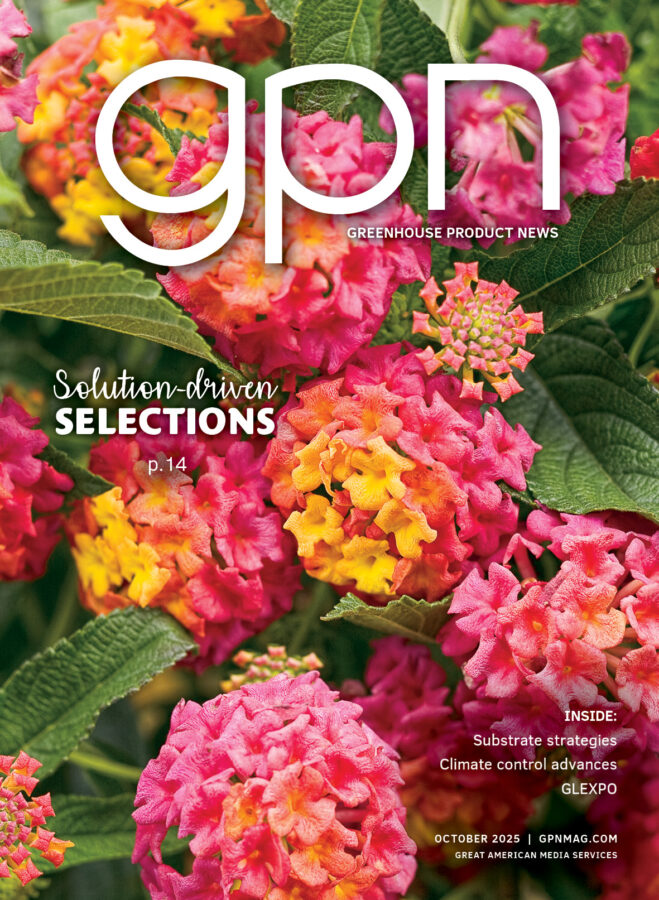Grower 101: Demystifying Patents And Trademarks
There are a lot of symbols on plant tags: ¨, ª, PPAF, PP#. What do they mean? With the increased popularity of vegetatively propagated annuals has come a growing bewilderment over the differences among patents, registered trademarks, unregistered trademarks and cultivar names. Since everything begins with an idea, let's start with ideas and getting credit for them.
Patents
A totally new and original plant can be patented. The U.S. Patent and Trademark Office (PTO) issues plant patents to anyone who has invented or discovered and asexually propagated a new and distinct plant, including new cultivars. A plant can be new and distinct based on several characteristics, from growth or flowering habit to storage qualities to drought resistance. This new plant can be a sport, mutant or hybrid, and all of these terms are clearly defined in the plant patent application. A plant patent lasts for 20 years, after which time it cannot be renewed. Patenting does not mean that a plant is trademarked or vice versa.
Licensed To Sell
A patent excludes everyone except the patent holder from growing or selling the patented plant unless the patent holder licenses others to grow or sell the plant on his or her behalf. In exchange for this permission, the licensee pays the patent holder a royalty. Trademarks can also be licensed.
To satisfy the demands of the market, rooting stations were established nationwide for propagation firms to produce and sell patented plant material. These stations were granted propagation licenses by demonstrating exemplary growing practices, and competition for licensure is fierce.
Licensed rooting stations have a great situation because more money is generated per square foot than in a regular greenhouse, but these growers earned the right to propagate by planning for the future — installing concrete walks, adding thrips screening, consulting with insect and disease specialists, and consulting with propagation experts. Much of the income generated from patent and trademark royalties is reinvested into research or into promotion of newly patented plants.
When Patents Go Bad
Let's say that after much time, money and struggle, you have obtained a plant patent for a new and exciting rock cress. After a year of disappointing sales, you decide not to grow this plant.
Since you own the patent and you haven't licensed anyone else to propagate it, you are essentially the only person on earth who can grow it, at least for the next 20 years. If you don't grow the plant during that period, it is lost for a generation.
Trademarks
According to the Federal Trademark Act, trademark means any word, name, symbol or device, or any combination thereof that will be used to identify and distinguish a certain product from those sold by others. Trademarks are valid for 10 years and can be renewed for perpetuity. A federal trademark is identified by the symbol ¨ or the words "Registered in the U.S. Patent and Trademark Office." State trademarks are also available. The symbol ª is used to denote trademarks not registered with the PTO.
Trademark names are published in the Official Gazette of the PTO. A cultivar name cannot be trademarked, so it cannot be registered with the PTO. Cultivar names can be registered under the International Commission for the Nomenclature of Cultivated Plants and remain universally available to be used by anyone. Cultivar names should be designed so anyone can use them (actual words rather than a nonsensical collection of letters and numbers), but it's difficult to trademark an ordinary word or name, so you end up with compilations like Auspalette, Ausjive and Ausbrother for David Austin roses.
Trademark Patent
Because trademarks are much less expensive to procure and because they require less tedium than acquiring patents, many growers have sought to trademark their products, thinking this will allow them to sell new plants without competition and provide them royalties. However, a trademark and a patent are not synonymous. Trademarks can only be used to indicate the source of the product, not an individual product or cultivar.
A series of plants can be trademarked. For example, let's say that Stellar¨ is the trademark name in the series 'Stellar¨ Garnet', 'Stellar¨ Maroon' and 'Stellar¨ Butterfly', but Garnet, Maroon and Butterfly are cultivar names, and cultivar names cannot be trademarked.
If the cultivars are not patented, anyone else can grow and sell them using the cultivar name but not the trademarked name of Stellar. The plant cannot be sold using a registered trademark of another grower (or some other entity). Using a similar trademark, e.g., Steller, is also illegal. Again, trademarked plants may or may not be patented.
Royalties
Breeders combat illegal propagation of patented plants on a global scale through organizations such as Royalty Administration International¨ (RAI). RAI is hired by propagation firms to ensure growers are following the rules. Number of cuttings produced has to be reported to RAI so that royalties can be allocated appropriately. Tag companies, patent owners, sales and broker groups, and other growers all have a responsibility to maintain a working system.
Take-home message: Patents and trademarks are considered proprietary products because they represent original work and are protected by law. Cultivars, on the other hand, are meant to be used by the industry and the general public for describing plants with certain attributes.
SIDEBAR
Abbreviations And Definitions Quick Guide
Trademark Ð any word, name, symbol or device, or any combination thereof, that is used to identify and distinguish a product from those sold by others. It is valid for 10 years and can be renewed forever. All trademark names are published in the Office Gazette of the U.S. Patent and Trademark Office (PTO).
¨ Ð This indicates that a plant has been registered with the PTO.
ª Ð A plant with ª on the tag has not been registered. However, ª does afford some legal protection. It may also be used if registration is pending.
Patent versus trademark Ð A plant patent lasts for 20 years and cannot be renewed. A patented plant may or may not be trademarked.
Trademark versus cultivar Ð Trademarks can only be used to indicate the source of the plant (e.g., the nursery name where the plant originated), not an individual cultivar. Cultivar names cannot be trademarked, although many plant tags are incorrectly printed to indicate that cultivar names have been trademarked.
PPAF Ð This stands for Plant Patent Applied For. It is another way to say "patent pending."
Understanding The Process
Why don't more growers apply for plant patents? First, the process can be very long and complicated. The Patent Office advises applicants to hire a patent attorney, and this attorney must be registered with the Patent Office. Second, the applicant must pay a filing fee and an issue fee, and the process can be quite expensive. For example, a small grower (one with fewer than 500 employees) would pay between $1,800 and $3,000 for attorney and PTO fees for each patent; a large grower would pay twice that amount. Third, most of the submitted applications are rejected the first time, and the process takes a minimum of one year. As a result of these obstacles, large companies apply for more patents than small- or medium-sized propagators.









 Video Library
Video Library 


















